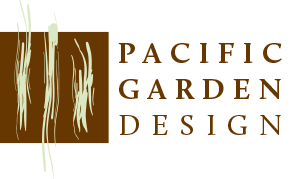Watching lively birds flit around the yard can add an extra layer of enjoyment to your outdoor space. Bird feeders will certainly bring avian visitors, but a little planning and some well-selected plants can create a full service bird habitat. Birds have certain needs for survival, and by making sure your landscape meets those needs, you can turn your yard into a bird-watching hotspot. Here are the basic steps to take to invite birds in.
The dark-eyed junco is a year-round visitor to Spokane and Coeur D'Alene and is common even in urban gardens.
Provide Shelter
No matter the time of year, birds need shelter. They need somewhere to hide from predators, somewhere to build their nests, or simply somewhere to get out of the weather. To attract a variety of birds to your yard, provide them with a variety of plants to shelter in. Each species has its own preference about what height or density of vegetation it prefers, and this can change throughout the seasons. Plant trees with a mix of large, medium, and small shrubs to give a range of options.
When choosing plants, consider winter as well. Evergreens with dense foliage can give excellent protection from predators, but also provide extra insulation in frigid temperatures. Dead trees are also important sources of shelter for birds. If you have enough space on your property that a dead tree won’t threaten structures or people, leave it standing to create an outstanding habitat for birds and other wildlife.
Provide Food
Though you can provide food for birds year-round, selecting plants that will provide seeds and berries throughout the winter will give birds an important resource in the lean winter months. By planting a variety of food sources, you can add some diversity beyond standard bird seeds and attract different birds in the process.
While plants with showy winter berries might seem like the most obvious food choice for birds, they are also drawn to seeds from many plants you may not think of. Cones from pines, firs, spruces, and other evergreens hold nutritious seeds, as do spent perennial wildflowers like lupine, echinacea, and milkweed. Ornamental grasses can even provide nutritious seeds for birds. To actually be useful to birds, however, it’s important to leave your garden cleanup for the springtime. By deadheading, trimming, and pruning in the fall, you remove valuable nourishment that could otherwise sustain birds through the winter.
The small cones of western red cedar hold seeds for a wintertime snack.
In warmer months, insects are a large part of the diet for many birds, so consider making your landscape favorable to them as well. Use native plants, which have been shown to attract more insects, both overall numbers and numbers of species, than exotic plants. Limit or eliminate pesticide use in your garden, as many products are toxic to organisms beyond what they are designed to control.
Hummingbirds also require a healthy supply of insects to feed on, but otherwise have different needs than songbirds, as they feed on flower nectar rather than seeds. Tubular flowers like penstemon, salvia, and agastache are fantastic food sources. And while hummingbirds certainly enjoy sugar water feeders, the red dye in store-bought mixtures is actually harmful to them. A homemade solution is easy to make by boiling one part sugar and four parts water.
Other Considerations
There are, of course, other things you can do to make your landscape attractive to birds. Building bird houses appropriate for the breeding birds in your area could yield a nest, which will give you weeks of enjoyment. A bird bath provides a place for grooming, which is critical to a bird’s health, as well as providing drinking water. In the winter when open water is scarce, a bird bath with a heating element will become a magnet for songbirds.
A basic overall principle to remember is that making your landscape better resemble nature will attract nature into it. To enjoy birds in your own backyard, you may have to make concessions for their happiness. You might see a tangle of shrubbery, but they see a cozy place to hide from a predator. A mess of spent flowerheads is a wintertime meal for a bird, and an aphid infestation is a summertime buffet. With a little planning and compromise, however, you can attract a variety of fascinating avian neighbors to your yard.



